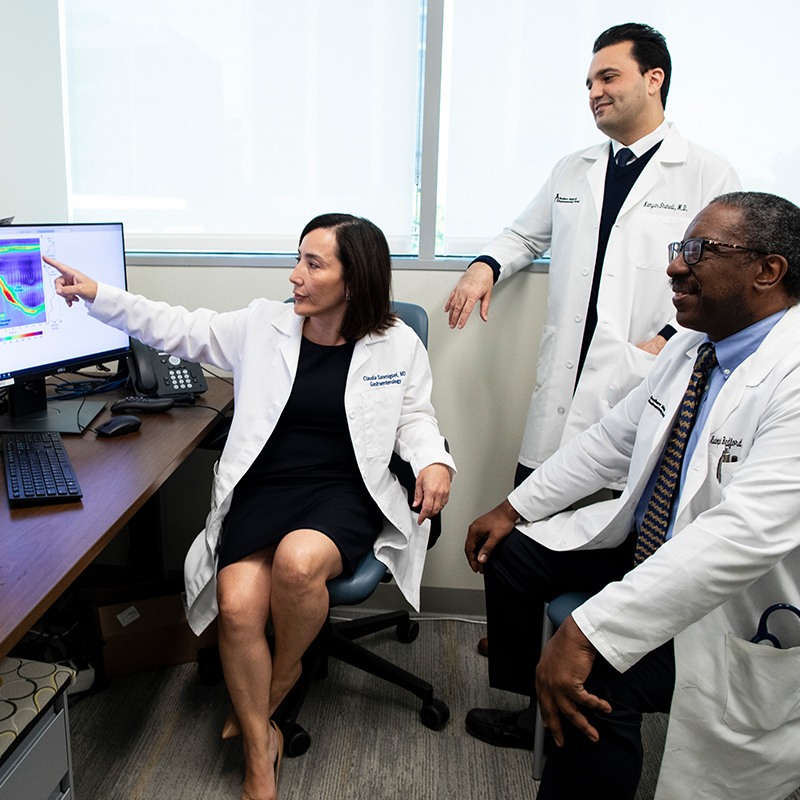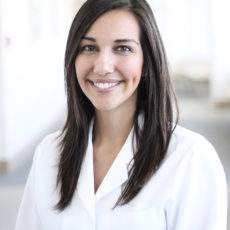Mohs Surgery

Overview
Mohs Surgery Overview
Mohs surgery or Mohs micrographic surgery is a procedure in which a surgeon precisely removes cancerous cells layer-by-layer while preserving as much healthy tissue as possible. The tissue is processed immediately, and your surgeon examines each layer until the removed layers show no further sign of cancer cells. Mohs surgery is typically performed on more sensitive areas, such as the head and neck or hands, to minimize scarring. Your surgeon may also recommend using it in cases of large or recurrent skin cancers.
Why Mohs Surgery?
An improvement on standard excisions, Mohs surgery has the highest cure rate for most skin cancers, supports the best preservation of healthy tissue and minimizes scarring.
Mohs surgery allows your highly trained surgeon to verify that they removed all cancer cells at the time of surgery, reducing the need for a second surgery, as well as dramatically reducing the risk of any recurrence.
Mohs surgery is an outpatient procedure and requires only a local anesthetic, and you will know your results right away.
Risks
Mohs Surgery Potential Risks and Complications
Mohs surgery is a standard procedure that rarely causes serious complications. However, as with all surgeries, there are some risks, such as:
- Itching
- Scarring
- Bleeding
- Infection
- Shooting pain
- Nerve damage
- Pain and discomfort
- Reaction to the anesthetic

Prep
Preparing for Mohs Surgery
Your doctor will give you instructions explaining what to do to prepare for your surgery. Be sure to ask your doctor about your medications. It is also a good idea to:
- Dress comfortably
- Do not wear jewelry
- Do not wear makeup
- Bring a book or game to pass the time
The surgery rarely takes a full day, but you should not make any other plans for the rest of the day, just in case.
What to Expect
What to Expect
Mohs surgery is typically a one-day, outpatient surgery with a local anesthetic. The procedure may last a few hours because the lab technician needs to process each layer that gets removed.
You won’t need to change into a gown unless the tumor’s location requires it. The nurse will clean and prep the surgical area. The surgeon will outline your cancer with a special pen and inject a local anesthetic to numb your skin so you don’t feel any pain during the procedure.

During the Procedure
Removing the cancer is a quick process lasting only a few minutes. Your surgeon will quickly and efficiently remove the tumor with a scalpel along with a margin of healthy tissue and put a temporary bandage in place. Your surgeon will make a precise “map” of the exact spot where they removed the tissue so they will know exactly where to continue with surgery if necessary.
The lab technician will take the sample to process it. Then the Mohs surgeon will evaluate the tissue to assess for any residual cancer. Analysis of the tissue will take about an hour or so. You may stay in a waiting room or office during this process. You will be able to read, use the restroom or grab a snack while you wait.
If there are still cancer cells in the tissue, you will go back in so your surgeon can remove an additional thin layer of tissue. You will again wait while the tissue is processed and analyzed. Your surgeon and technician will repeat this process until no cancer cells remain.
Your nurse or surgeon will re-administer a local anesthetic if necessary.
Once all cancer cells are gone, your surgeon will determine how to close the wound. The surgeon has several options to choose from, including:
- Stitches
- Allowing the wound to heal on its own
- Taking a skin graft from another part of your body to cover the wound
- Shifting skin from an area next to the wound to create a skin flap to cover the wound
After the Procedure
Your surgeon will provide you with instructions on how to care for the wound after surgery, and you will schedule a follow-up appointment with your doctor or surgeon to make sure the surgery site is healing correctly.
Follow-Up
People who have had skin cancer have a higher risk of developing skin cancer again. It’s essential to schedule regular checkups with your dermatologist at least once a year, or more often if your surgeon, doctor or dermatologist deems it appropriate.
Specialists
